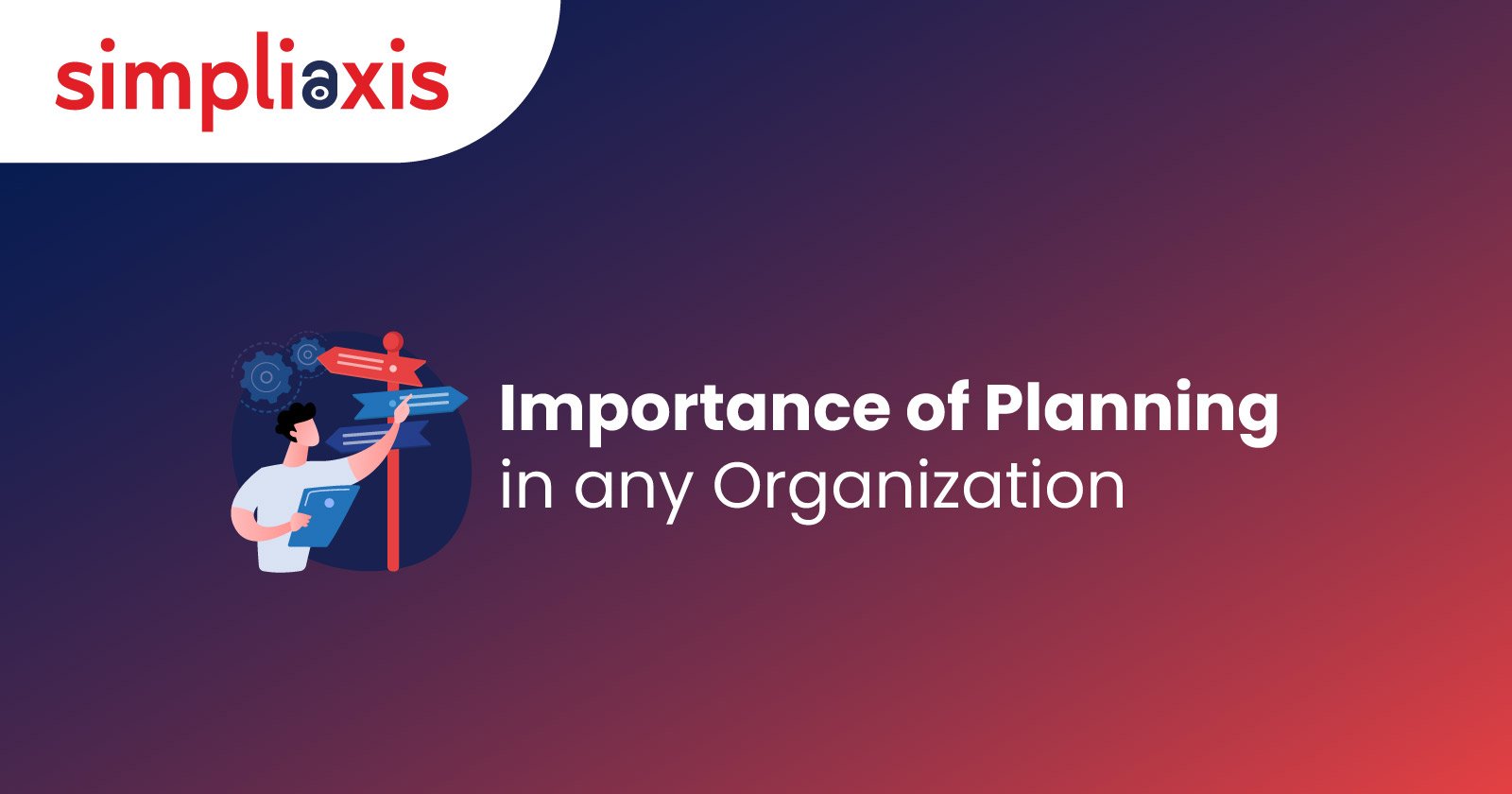In this article, we will see the importance of strategic planning in an organization, as well as the influence it has on the achievement of small and large objectives, and we will analyze the most objective way how to carry out adequate planning from a global point of view, taking advantage of everything that surrounds us for the achievement of the goals set.
About Planning
Planning is part of the life of every person: going shopping, activities that will be carried out during the day, a family reunion, or the birthday party, etc., It is present in the family circle, at work, in people, in companies, and we can say that it is an integral part of each and every one of us. In the same way, organizations need planning for effective decision-making. This particular planning is called strategic planning. For many people, making decisions causes them fear of the unknown or of what will happen if they venture to something new, and this is also lived in organizations, whether small, medium, or large. On the other hand, not planning is not knowing how things are going to be done. For this reason, both people and companies can be afraid of the way they can achieve their objectives because not knowing how to plan correctly will make it very difficult to achieve what is desired. This is why they need strategic planning, which will help predict what would be the different scenarios of what could be or happen and thus enable them to make decisions based on what they want in the future. In this process, all areas of the company are involved: accounting and finance, marketing, purchasing, production, etc.
Strategic Planning
First of all, it is important to understand the concept of Strategic Planning. It is a tool used to organize the present based on the projections of the desired future, that is, a roadmap to guide an organization from where it is now to where it would like to be in the future.
For a great strategic planning strategy, objectives must be clear, realistic, achievable, and measurable, using the means and resources we have as well as the elaboration of a good SWOT (Strengths, Opportunities, Weaknesses, Threats) that helps us know what direction to take. Moreover, it must be simple, clear, and based on the current situation with enough time to make it happen.
Importance of Planning in an Organization
Having the concept of strategic planning clear, now we will proceed on listing the main reasons why this process is extremely important in an organization:
1. It helps set different key elements for the organization
The first reason why strategic planning is so important for an organization is that it will determine a pattern of vital factors within it. First and most importantly, the decisions for your organization, which will also set and reveal its objectives, purposes, or goals, and produce the main policies, and plans to achieve them and defines the range of businesses that the company must follow, the type of human organization that it is or intends to be, and the nature of the economic and non-economic contribution it intends to make to its shareholders, employees, customers, and communities.
2. It allows the organization to understand their current position and goal position
Through Strategic Planning, organizations can understand what their current state is, where they want to be, and, therefore, what they must carry out to achieve it. It is an exercise that defines what they want to achieve and the ways in which it will be done, always considering the available resources. For this reason, it is an extremely powerful tool for diagnosis, analysis, reflection, and collective decision-making.
3. It allows small organizations to increase their value
When you hear the concept of strategic planning, it is very commonly associated with a large corporation. However, the majority of corporations in most countries are small, which is a critical mass of businesses that undoubtedly need to increase their value in the market and achieve greater competitiveness in an increasingly complex context.
Throughout our history, we have faced the same barriers when it comes to implementing a methodology of reflection and strategic execution. The SME is usually eminently operational. "I have to sell, I can't think about theories", are some of the most common objections in the implementation of this philosophy in the management of an SME. In this way, researching, planning, and aligning the organization towards the achievement of objectives to increase the organization’s value is a difficult task that can be achieved through strategic planning.
4. It is the ideal tool in changing environments (present)
"In the middle of difficulties, there is an opportunity"
The crisis caused by the coronavirus (COVID-19), like any other, supposes a volatile and changing economic environment, which gives rise to a rethinking of the established strategic models and plans. It is time for new planning, in which it is essential to make strategic decisions in an Agile and correct way, to set the course of the organization around the new needs.
Strategic direction is to be prepared to face these new situations and take advantage of them successfully through a strategic plan. To do this, the opportunities that arise in this environment of great challenges in the business activity must be detected in time, both in a new company and in an already consolidated one. Today, due to the constant changes to which companies are subjected, it is more essential than ever to carry out Strategic Planning. Before, when there were not so many permanent changes, company managers could set plans and goals based on their experience and intuition. Today this is impossible, organizations must be prepared to face threats and take advantage of opportunities. Only through this organizations will be able to successfully achieve the objectives that are set and become sustainable over time.
5. It allows better decision making
Every time we make a decision, we make it aware that we give up other options that could also be effective. That is why during this process it is always advisable to ask questions about different scenarios since they will allow us to generate alternative strategies if our environment or organization itself were to change. This is an activity that can be simplified with strategic planning, as it involves considering different situations and times in regards to the specific goals that the organization sets through it, too.
6. It ensures the future of the organization
The next reason why having a strategic plan is important in your organization is because it will give it a sense of security when it comes to its future behavior and yields. This part of the plan involves the formulation of different key elements like the organizational mission, vision, values, and objectives. All these elements will be a guide for the organization to keep the way in the difficult task of staying current up to date in a market, but without losing the initial essence and purpose.
Some things to keep in mind
Despite the direction and order that strategic planning will give to an organization, there are some things that have to be considered in order to get the best out of this tool, understand the extent of what it covers, and learn what it does not so that can also be taken care of. In this way, strategic planning does not decide future action, as it can only be taken at the moment, so it does not represent the programming of the future. This is why it needs to be understood that strategic planning will not give you forecast sales of the product or service that your organization provides.
Also, keep in mind that this planning should in no way try to replace the intuition, effort, and criteria of the organization’s directors, but it should work hand in hand with those elements for the best results.
Strategic plans can also change along the way, so do not try to use them as recipes or molds for every single situation that you face or wish to plan on. They have to be adapted and thought depending on the current problem and solution that you wish to get from it. This is a reason why they cannot be replicated from other organizations, as every situation is unique and needs different.
Simpliaxis is one of the leading professional certification training providers in the world offering multiple courses related to Agile methodologies. We offer numerous Agile related courses such as Certified ScrumMaster (CSM)® Certification Training, Certified Scrum Product Owner (CSPO)® Certification Training, Certified Scrum Developer (CSD) Certification Training, Agile and Scrum Training, PMI-ACP® Certification Training, Professional Scrum with Kanban™ (PSK) Training, Certified Scrum Professional® - Product Owner (CSP®-PO) Certification Training, Agile Sales Management Training, Behaviour Driven Development (BDD) Training and much more. Simpliaxis delivers training to both individuals and corporate groups through instructor-led classroom and online virtual sessions.
Conclusion
Dreams, goals and the way managers see things give the members of the companies a vision of how they can be seen in the future. This provides the company with a sense and identification of individuality and those dreams are possible to achieve, and without a doubt, they will achieve it. The existence of various sources of thought in planning, direction, and strategy are elements that are key in this process. These strategies have ventured into the economic-administrative areas and have allowed developing strategic planning efficiently and effectively, achieving an optimal functioning of an organization.
As we have already discussed, the importance and advantages of making strategic planning in organizations are mainly that it helps them improve their competitiveness, be at the forefront, innovate continuously and successfully, as well as their collaborators to maintain and grow in this globalized and technological world, which requires a high degree of preparation, dexterity, and anticipation of social needs and the needs of the organization itself. After reading this article, you know how important it is that you highly consider this strategy to make the best out of your organization.






















